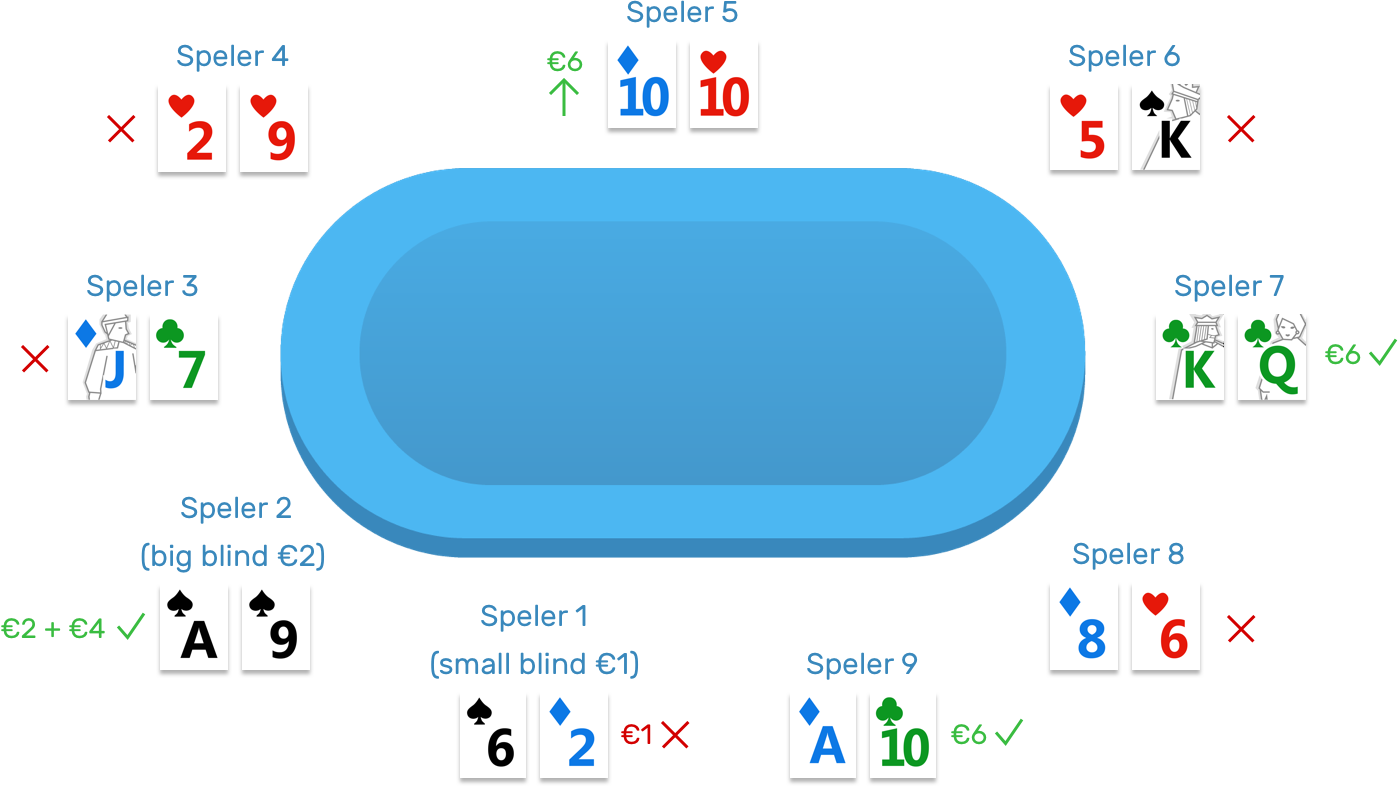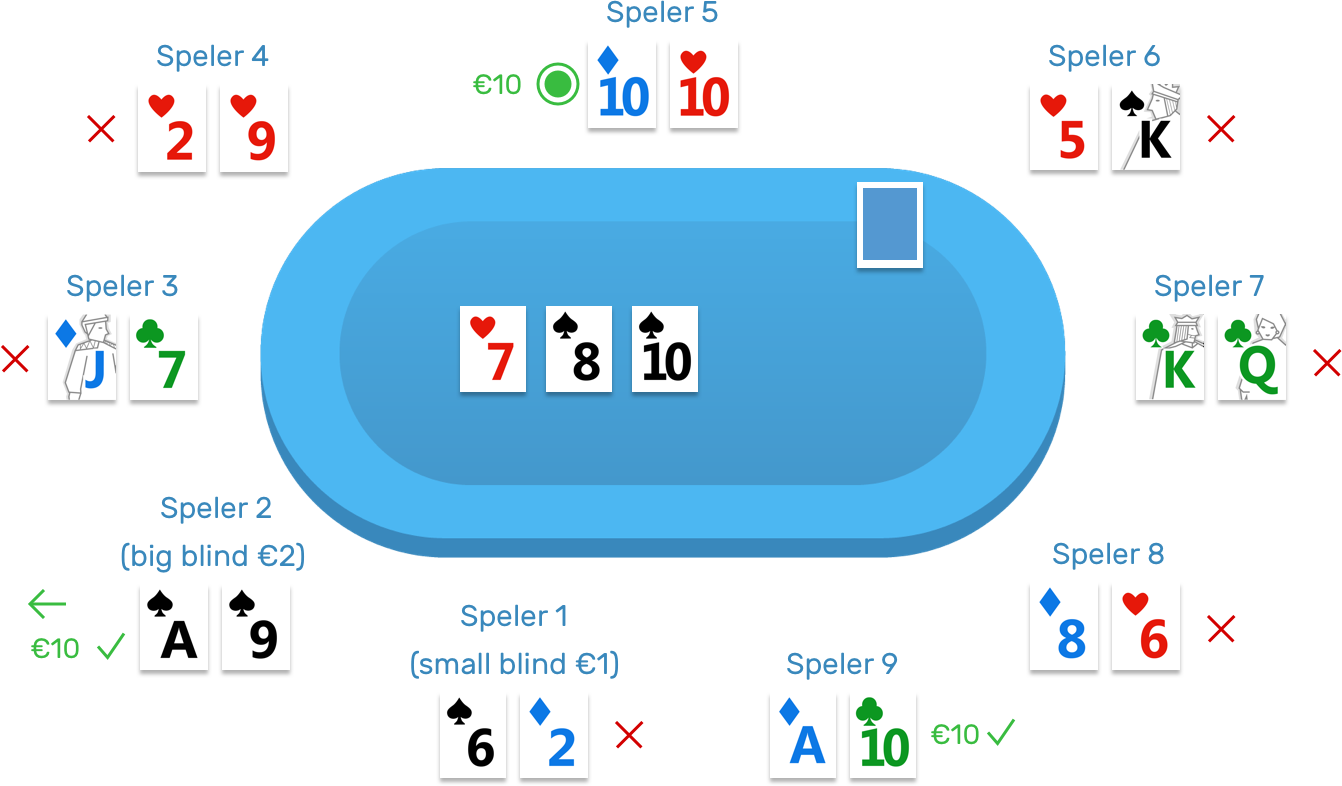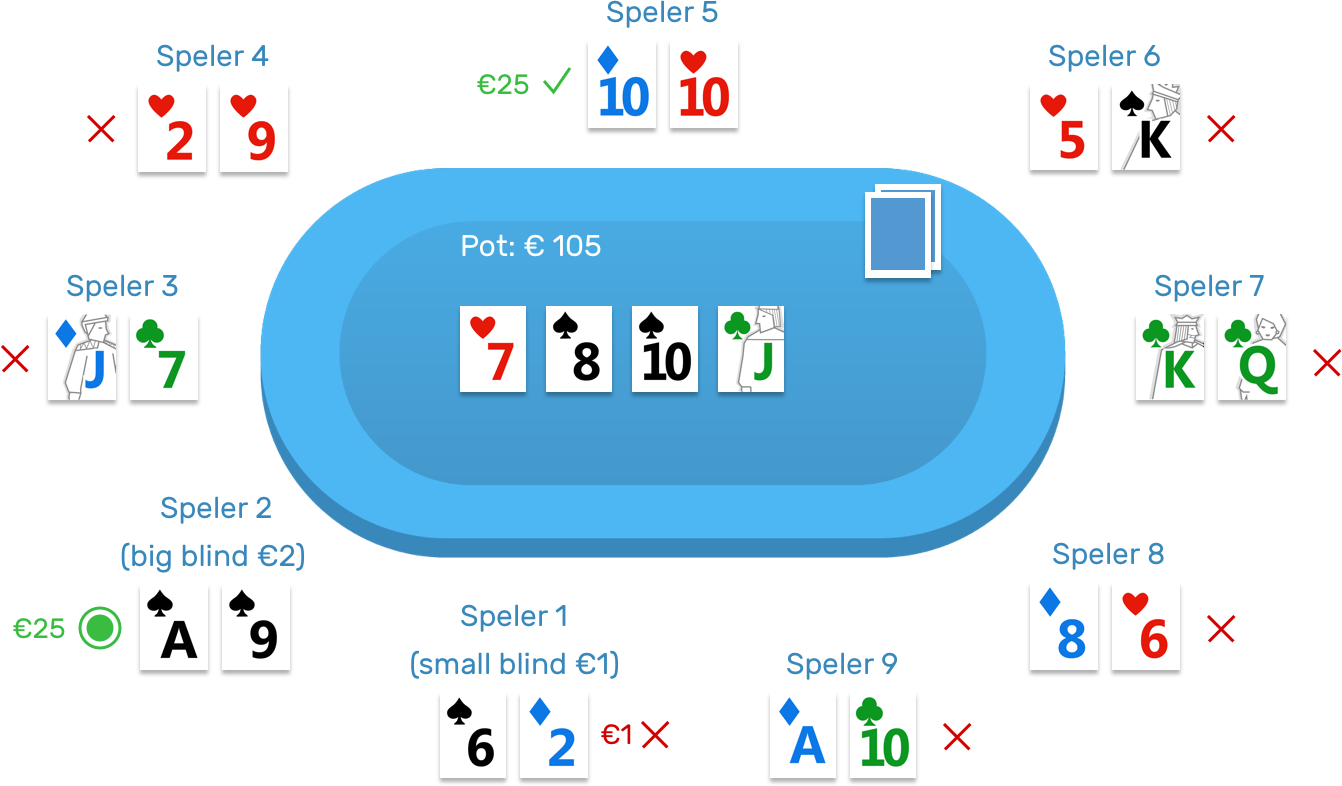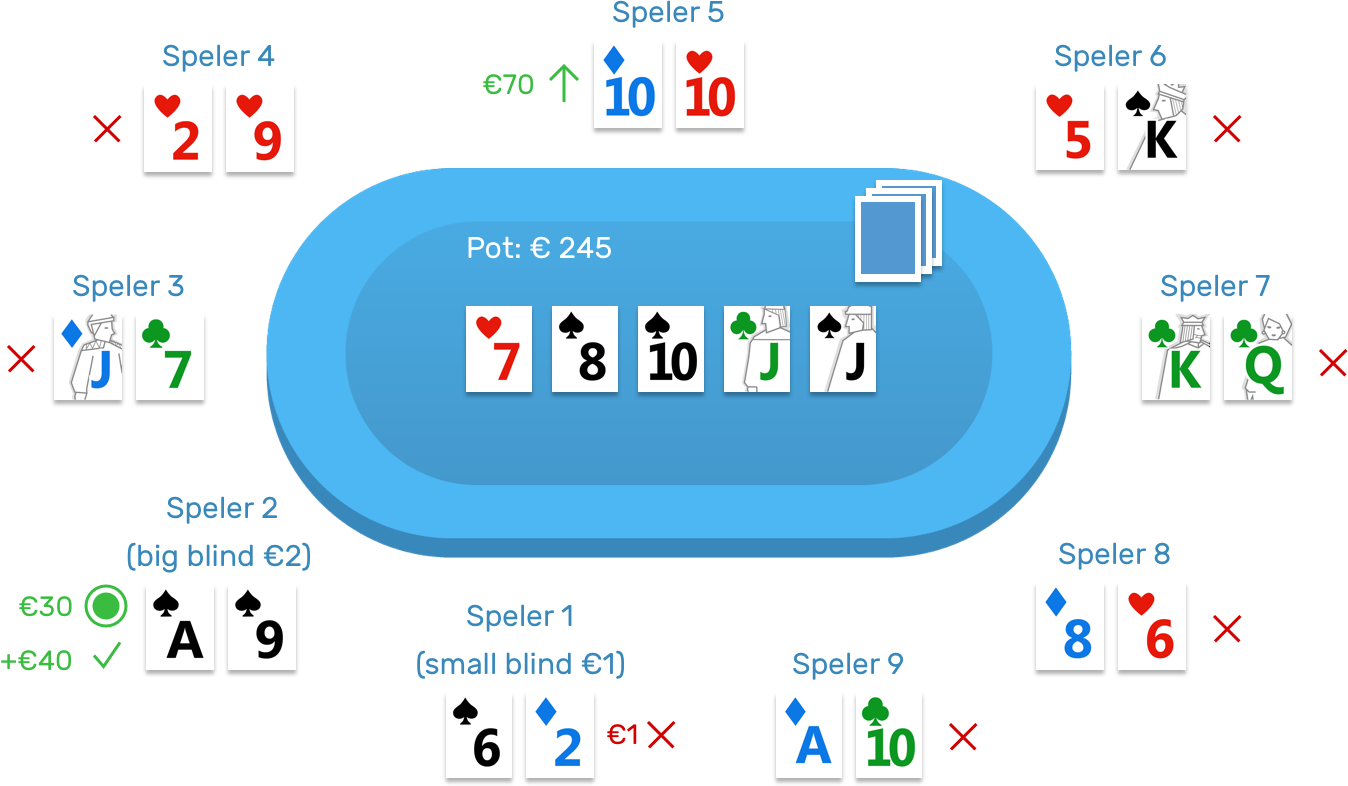Texas Hold’em is the most played poker variation in the world. A lot of other variations use Texas Hold’em as their basis. Let’s try to explain the game play of a table during a hand using Texas Hold’em.
Start
To start we sit at a poker table with 9 players. This is a customary number of players for a poker table. One player has the Dealer button. This button indicates from which position cards should be dealt. The player that sits clockwise next to the Dealer is in the Small Blind position. The Small Blind has to pay an obligated stake in this hand. The player next to the SB is the Big Blind, who also has to pay an obligated stake. In most cases the BB equals to the double of the SB. An example of the blinds is Small Blind € 1, Big Blind € 2. First up are the obligated stakes.
Next the cards are dealt. In a self-deal tournament the Dealer has to hand out the cards. For this you start at the Small Blind and give all players clockwise one card at a time. The cards are dealt face-down. Players can only take a look at their own 2 cards. That information is best kept to themselves.
The player that is sitting next to the Big Blind is the first to make action. He has 3 options.
Option 1
The player can fold. Folding means that a player doesn’t want to play his cards. He throws his cards face-down in the direction of the dealer. A player that folds doesn’t have to pay any chips in this hand and just waits until the next hand is dealt.
Option 2
The player can call. Calling means that you want to play the hand. For a call you place the same amount in the pot as the player before you. In this case you pay the Big Blind. In the example we mention a BB of € 2. The player places € 2 in front of him. After that the next player is up.
Option 3
The player can raise. When he has good cards he can raise the stakes. Raising can be done with any amount, as long as it’s at least double the stakes or the raise that happened before him. In this case the player would have to raise to at least € 4. Of course he can also raise more. The maximum he can raise is all his chips, also called an all-in.
When the player has made his action, and he has chosen one of 3 options mentioned above, his turn is over. The next player is up. Like this the entire table is settled until all players have mucked their cards or have placed the same stakes as the other players.

- Player 1Places Small Blind of € 1.
- Player 2Places Big Blind of € 2.
- Player 3Folds.
- Player 4Folds.
- Player 5Raises to € 6.
- Player 6Folds.
- Player 7Calls and bets € 6.
- Player 8Folds.
- Player 9Calls and bets € 6.
- Player 1Folds. He loses his € 1.
- Player 2Calls and adds € 4 on top of his € 2.
At this point the dealer collects all chips in the middle of the table. In this case the amount totals to € 25.
Flop
After the first round the next phase is the Flop. On the Flop 3 communal cards are dealt face-up on the table. The dealer will take the book of cards and puts away one card face-down. That card is called the burn card. Next he will turn 3 cards face-up in the middle of the table. The burn card doesn’t have further importance in the game.
The 3 cards we call the flop are communal cards that players can use to form their hand. Remember a poker hand consists of 5 cards. If you have A–K in hand and Q–J–T shows up on the flop you’ve made a Straight.
As soon as the 3 cards are open a new round commences. We start once again with the player on the left of the dealer. Only the players who still have cards can participate in the next round. The players have two different choices.
Option 1
The player checks. Checking means he will not bet. You can check by saying “Check” out loud or by tapping with your hands or some fingers on the table.
Option 2
The player bets. You should bet with at least one Big Blind. In the example the player should bet at least € 2.
When a player bets, the next player can call the bet, raise or folds his cards without paying extra chips. The next players can no longer check when a bet is made.

- Player 2Checks.
- Player 5Bets € 10.
- Player 7Folds.
- Player 9Calls € 10.
- Player 2Calls € 10.
3 players remain in the hand. Their stakes are added to the pot. The pot now totals to € 55.
Turn
We’ve arrived at the Turn. The turn consists of 1 card that enters the field next to the Flop. It is a fourth communal card that players can use to form their hand. First the dealer will muck a closed card – the burn card – before opening another card as Turn.
Another betting round follows this card, just like after the Flop.

- Player 2Bets € 25.
- Player 5Calls € 25.
- Player 9Folds.
The pot totals to € 105 at this point.
River
The River is the last communal card. Just like the Turn the River consists of only one card. After the River no more open cards will follow. Players will need to have made their hand at the River. Before the River card a closed burn card is put away.
The final betting round happens. When this round has ended the cards of the remaining players are shown and the best hand wins the pot.

- Player 2Bets € 30.
- Player 5Raises to € 70.
- Player 2Calls and adds € 40 to the pile
- Player 5Shows his cards and has made a Full House.


- Player 2Had a Straight at first and improved to a Flush with the last card.
Player 5 wins the pot of € 245.
This is of course just an example of a possible hand in No Limit Texas Hold’em. The No Limit aspect is explained in the next lesson. There are many, many more possibilities in a poker game.
Not all hands are played until the end. When a player makes a bet or raise and all other players fold, the bet-making players wins the pot. He doesn’t even have to show his cards. This is possible anytime during the hand, even after the Flop. In that case the communal cards that are not on the board yet are also not shown. The game just continues to the next hand.


